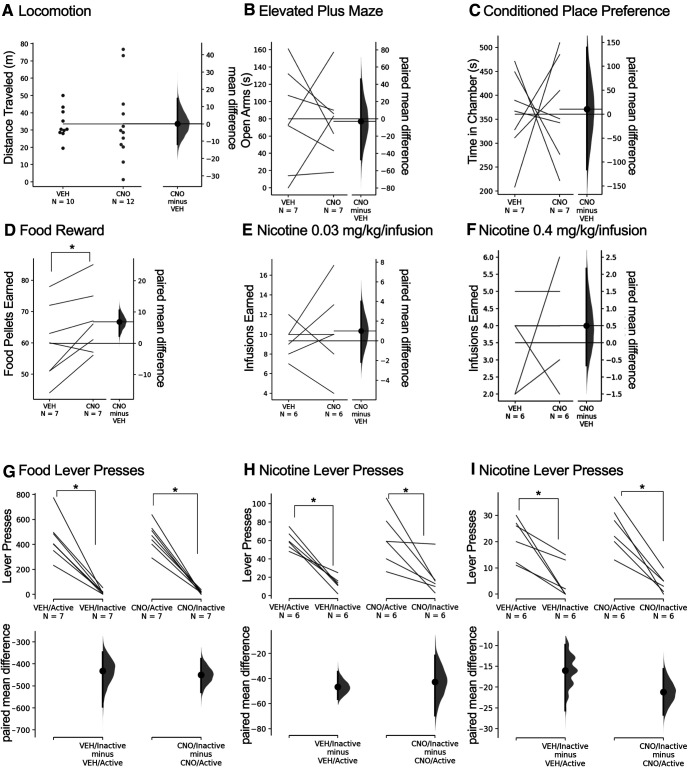Figure 3.
Inhibition of the IPN-vHipp pathway increases food self-administration, but not other behaviors. A, Mice expressing hM4Di DREADD in the IPN-vHipp pathway did not differ in distance traveled in an open field following vehicle (VEH) or CNO injection. They also did not differ in the time in the center of the open field (see Extended Data Fig. 3-1). B, Differences were also not found in anxiety-associated behavior in the EPM in IPN-vHipp hM4Di-expressing mice following VEH or CNO injections. C, In the conditioned place preference task, IPN-vHipp hM4Di-expressing mice demonstrated no differences in time spent in the vehicle-paired versus CNO-paired chamber. D, For food self-administration, IPN-vHipp hM4Di mice exhibited a significant increase in the number of food pellets earned following CNO injection, as compared with vehicle injection. E, F, When examined for intravenous nicotine self-administration, IPN-vHipp hM4Di-expressing mice did not differ in the number of nicotine infusions earned either at the (E) low 0.03 mg/kg/infusion or (F) high 0.4 mg/kg/infusion nicotine doses following vehicle or CNO injections. G–I, Lever pressing behavior was examined for differences in responding between the active and inactive levers. All groups exhibited significantly higher lever pressing directed at active lever, as compared with the inactive lever, for (G) food reward, (H) 0.03 mg/kg/infusion nicotine, and (I) 0.4 mg/kg/infusion nicotine. Experimental design for virus injections consistent with Figure 2A; *p < 0.05.

